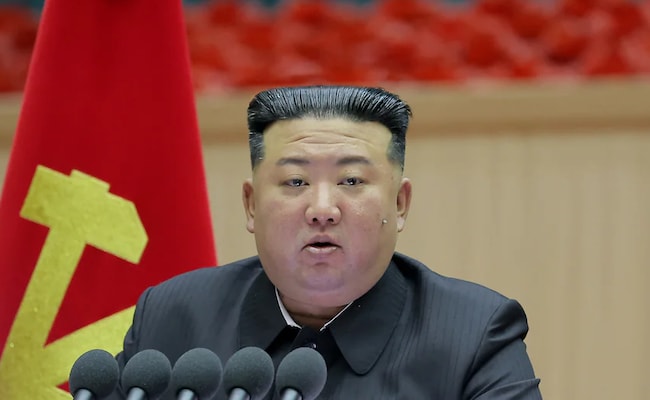US President-elect Donald Trump has been named Time magazine’s ‘Person of the Year,’ underscoring the continuing centrality of his personality in shaping US politics and global discourse. This was the second time he got this recognition. It was inevitable, of course, given the nature of his victory in the November Presidential elections. The liberal media has been one of the most vocal opponents of Trump and his policies, but in the end, it is now forced to acknowledge that it remains out of touch with mainstream America. And Trump will not let them forget this easily.
In the last few days, Trump has been outlining his administration’s policy priorities and making it quite clear that he sees no need to go back on most aspects of his campaign promises. Looking back on his win against Vice-President Kamala Harris last month, Trump has asserted that his campaign resonated with the country by focusing on immigration, the economy, and other key issues that he has argued were more in tune with voters’ concerns than the Democratic message. “I don’t think they [the Democrats] got the feel of the country,” Trump has asserted. According to him, the Republican Party has become the party of “common sense”. Not only did he win the popular mandate this time, but the Republicans will also be in control of both the US House of Representatives and the Senate.
‘Bring It Back’
Trump feels vindicated of his assessment of the popular mood and in his interviews, therefore, he is making it clear that he intends to take his agenda forward. The tone, however, is softer and gentler in his interviews and he is talking of uniting the country by working to ensure its success. In his words: “I’m really looking to make our country successful. I’m not looking to go back into the past. I’m looking to make our country successful. Retribution will be through success. If we can make our success—his country successful, that would be my greatest—that would be such a great achievement. Bring it back.”
But he has also talked of the possibility that his former political opponents like Liz Cheney could face jail time. He has also underlined that he believes “a vast majority” of the nearly 1,200 people who have either pleaded guilty or were found guilty at trial for crimes connected to the January 6 attack should not be in jail. He will begin reviewing possible pardons “in the first hour” he assumes office.
Immigrants Prime Target
Immigration seems to be his core priority, with illegal immigration being described by him as “an invasion of our country” requiring the use of the National Guard and local law enforcement along with the military in deportation processes, something that can be legally challenging. He is threatening nations not willing to take back immigrants with tariffs, underscoring that “if they don’t take them back, we won’t do business with those countries, and we will tariff those countries very substantially”. Trump has also reiterated his campaign pledge to abolish birthright citizenship, which is guaranteed by the 14th Amendment, and hinted that he might try to overturn this right through executive action.
Other domestic issues that have emerged as key for Trump in the early days of his administration are managing high inflation, reviving the US oil industry (“Drill, Baby, Drill”), and the downsizing of the federal Department of Education and transferring most responsibilities to state governments. Trump is calling for a “virtual closure of the Department of Education in Washington,” something that would require Congressional acquiescence.
An ‘Agreement’ On Ukraine
On the foreign policy front too, he is making the dividing line with his predecessor quite clear. He has underlined his “vehement” disagreement with the Biden administration’s policy of allowing Ukraine to use US-provided long-range weapons, called Army Tactical Missile Systems, or ATACMS, to strike deep into Russian territory, arguing that this policy was “just escalating this war and making it worse”. He continues to suggest that he does not intend to abandon Ukraine. But the way to do this, for Trump, is to reach an agreement, as the war is a “tragedy” with a “staggering” number of people killed on both sides of the conflict.
On the Middle East, he has something new to say. In his last term, he had called for “a realistic two-state solution”, but now he seems to be suggesting that he supports “whatever solution we can do to get peace”, that there are “other ideas other than two-state.” In a striking assessment, he said that he wants “a long-lasting peace, a peace where we don’t have an October 7 in another three years. And there are numerous ways you can do it. You can do it two-state, but there are numerous ways it can be done.” This is open to interpretation in several ways, and that’s perhaps what Trump intended.
Keeping It Straight
And finally, tariffs remain Trump’s favourite tools of statecraft. He intends to continue to target three of America’s largest trading partners—Mexico, Canada and China—with tariffs, though interestingly, he has also said he “can’t guarantee” tariffs won’t lead to a spike in prices of goods for Americans.
Trump’s priorities are clear and his agenda is beginning to take shape. His nominations are also final. Apart from Matt Gaetz, Trump has stood by most of his nominees despite some murmurs from the Senate. As the year ends, the Trump phenomenon is once again beginning to reshape the US and, with it, the wider world—for good or for bad, only time will tell.
(Harsh V Pant is Vice President for Studies at Observer Research Foundation, New Delhi.)
Disclaimer: These are the personal opinions of the author
Waiting for response to load…














